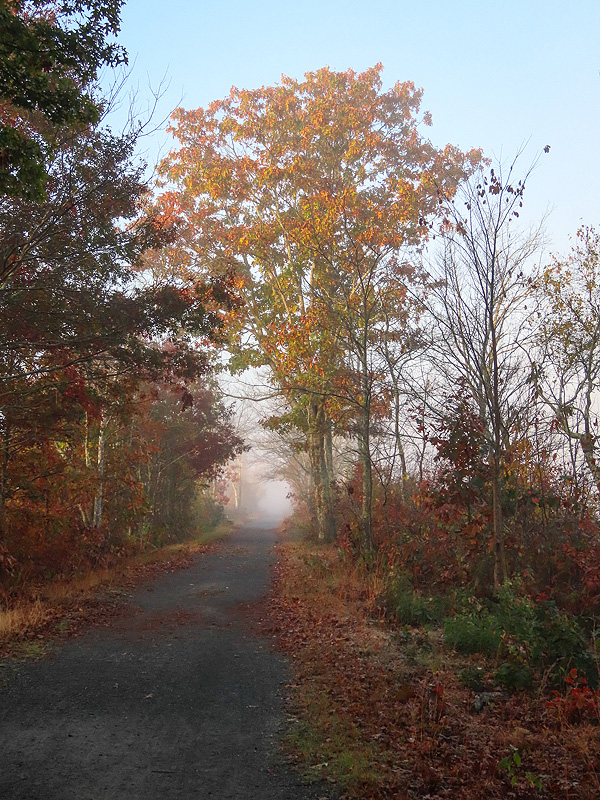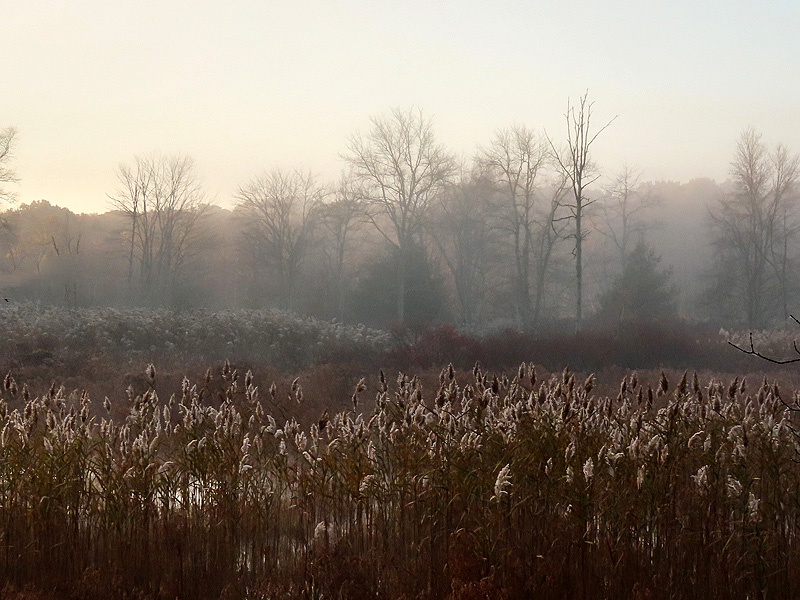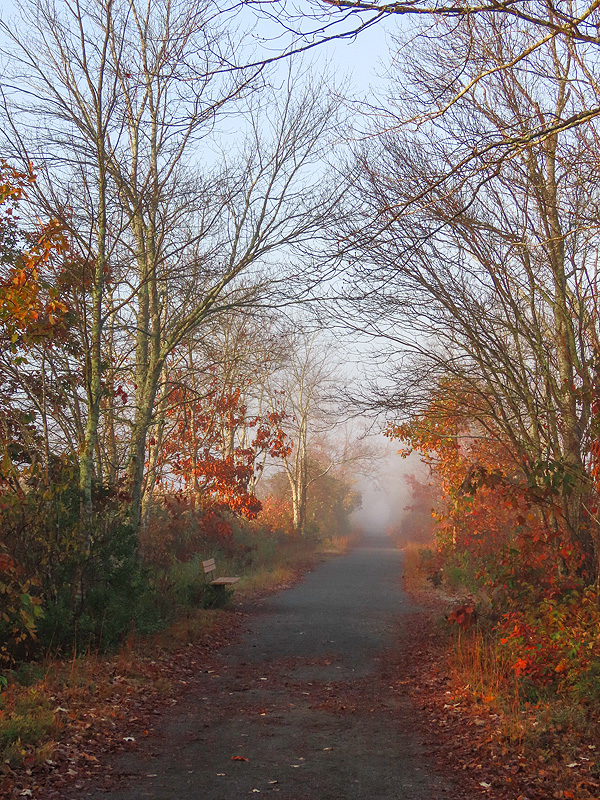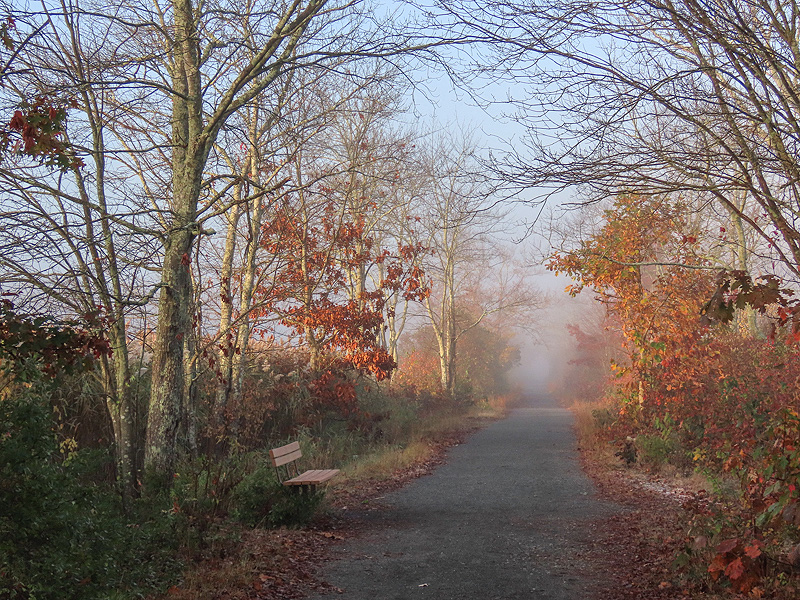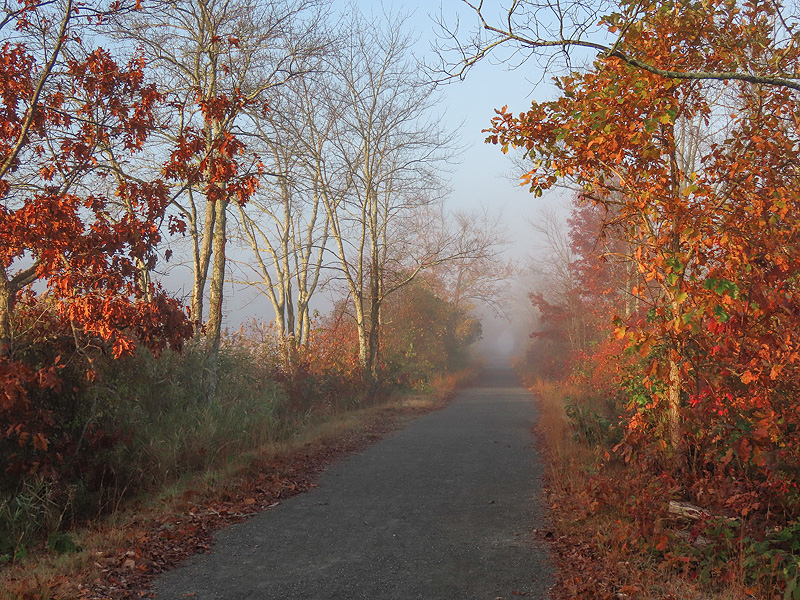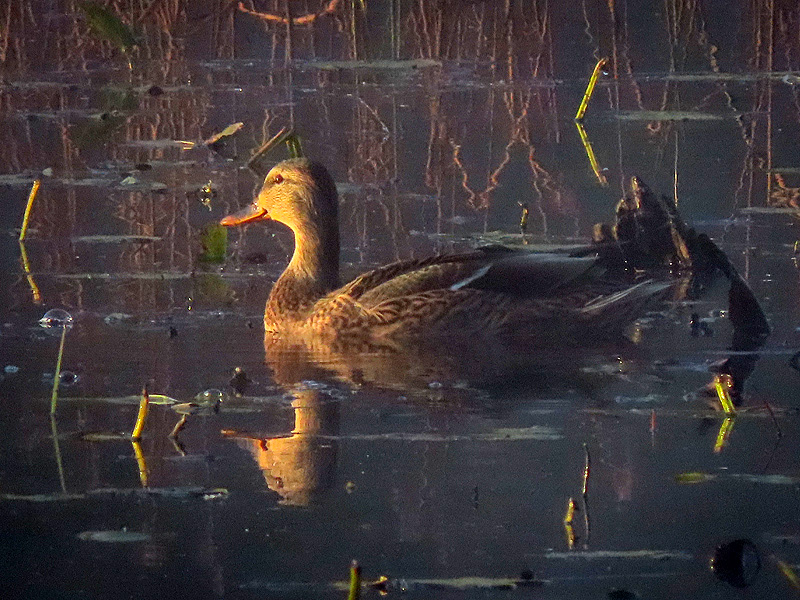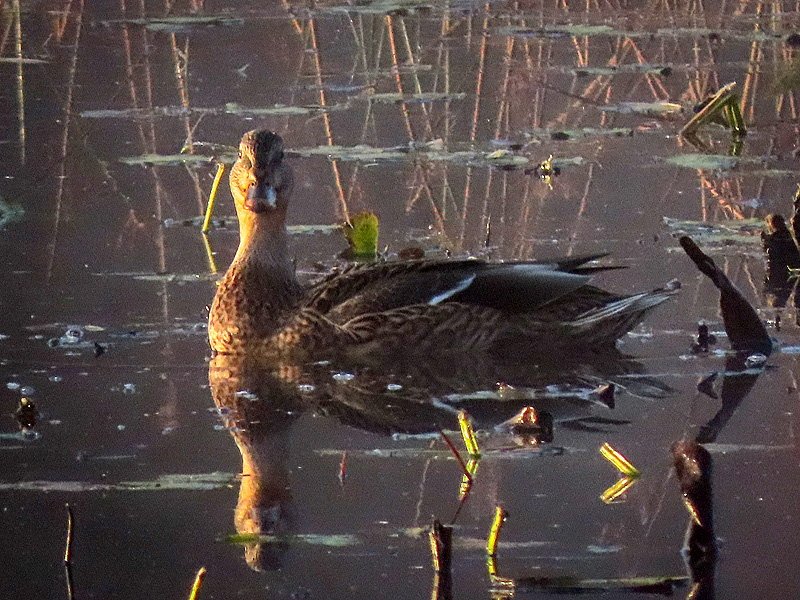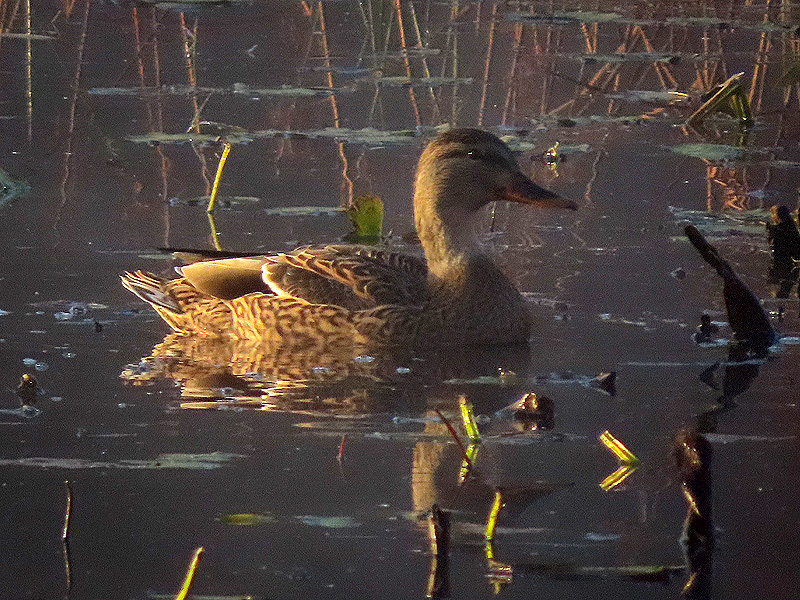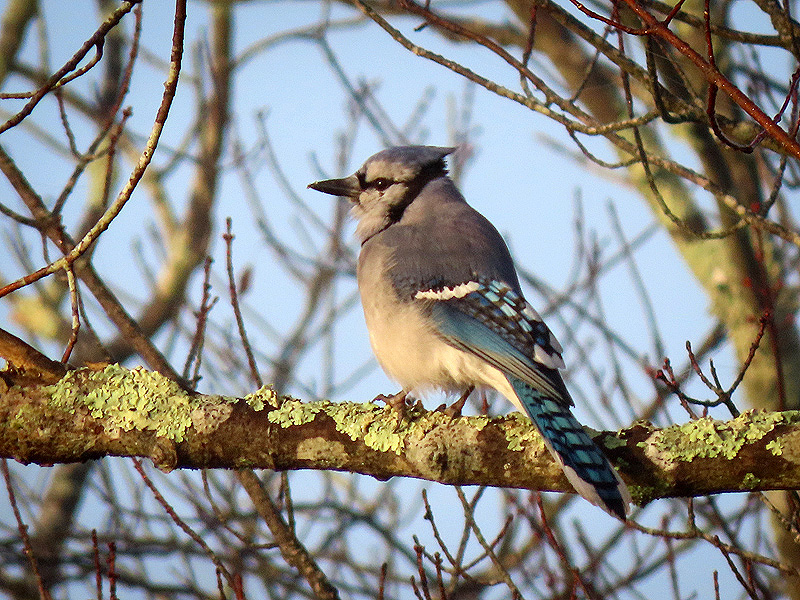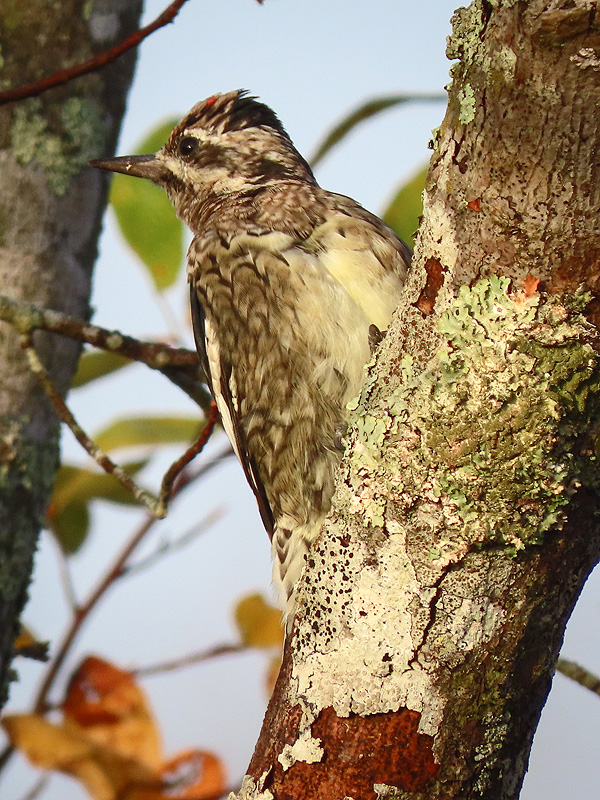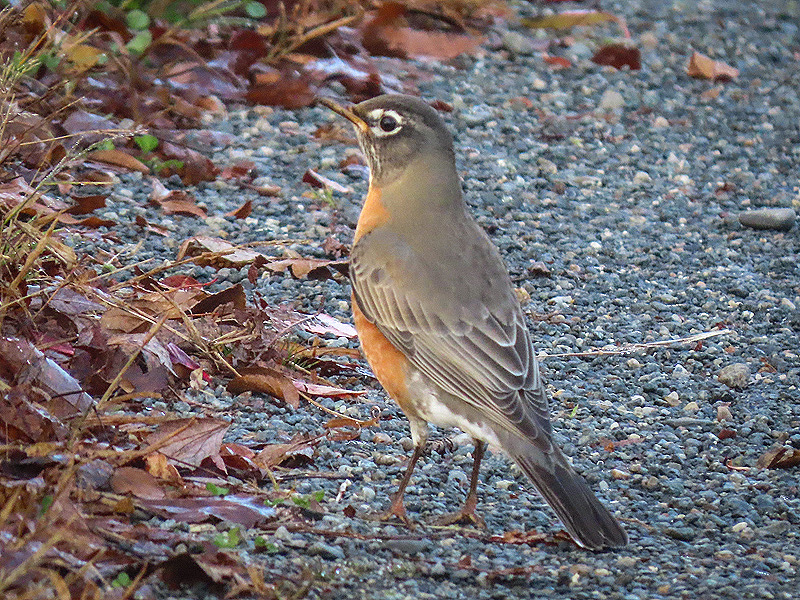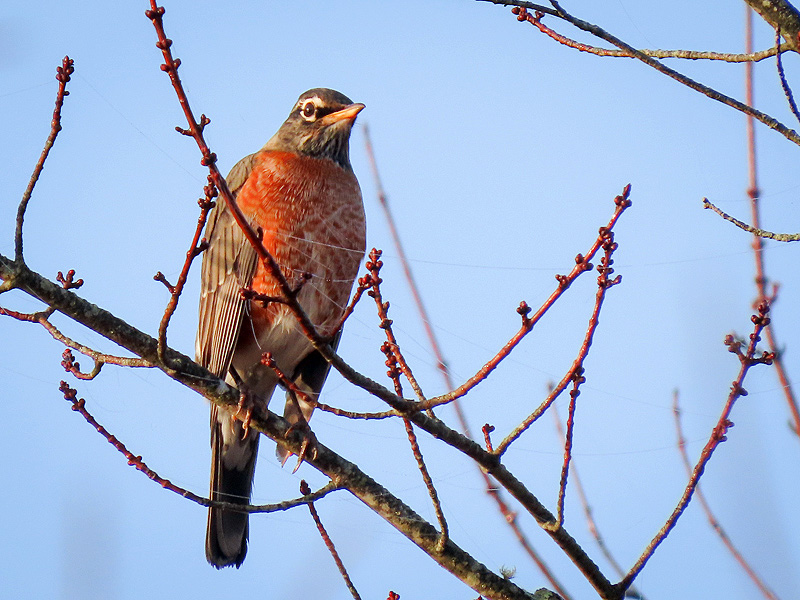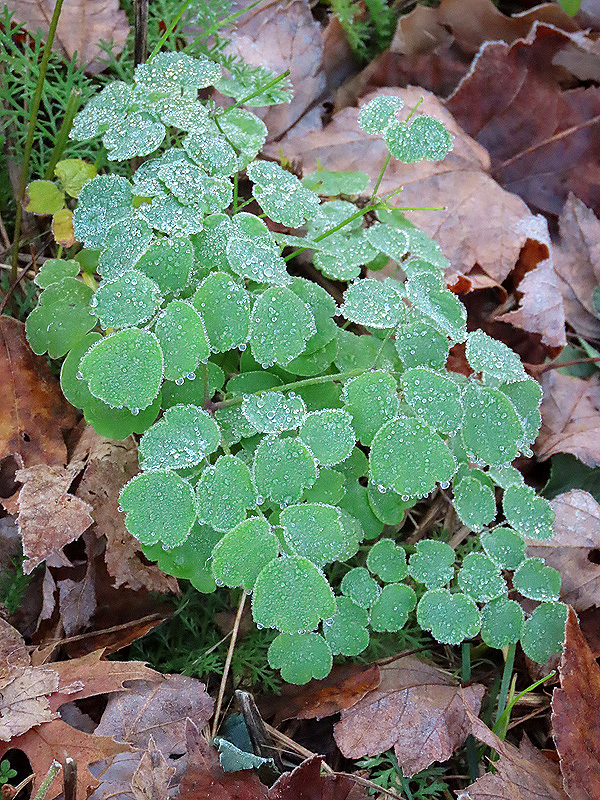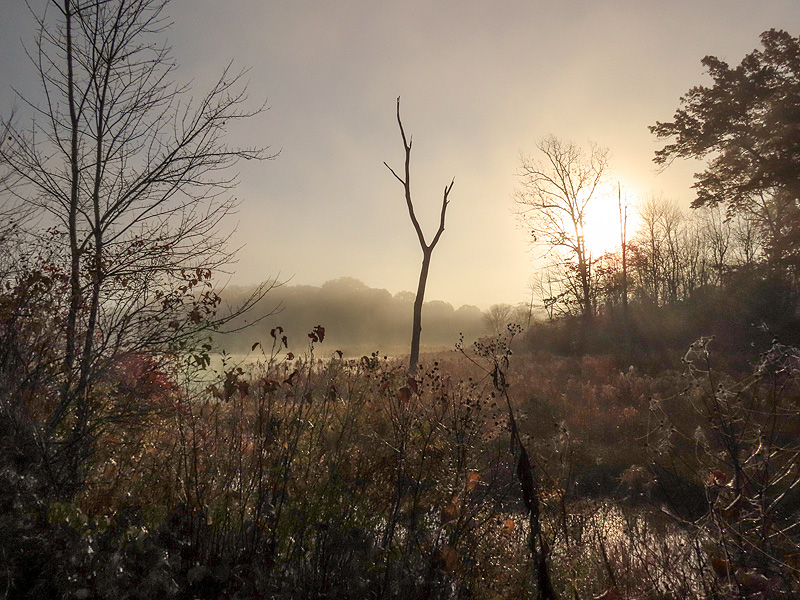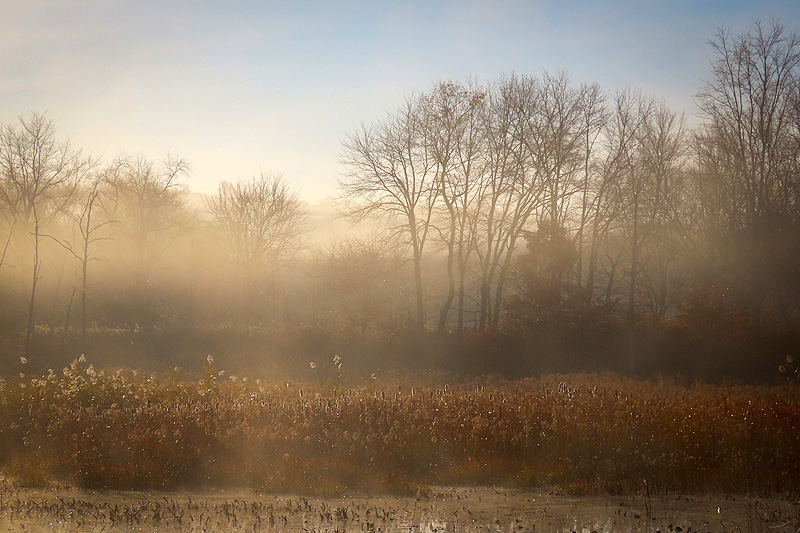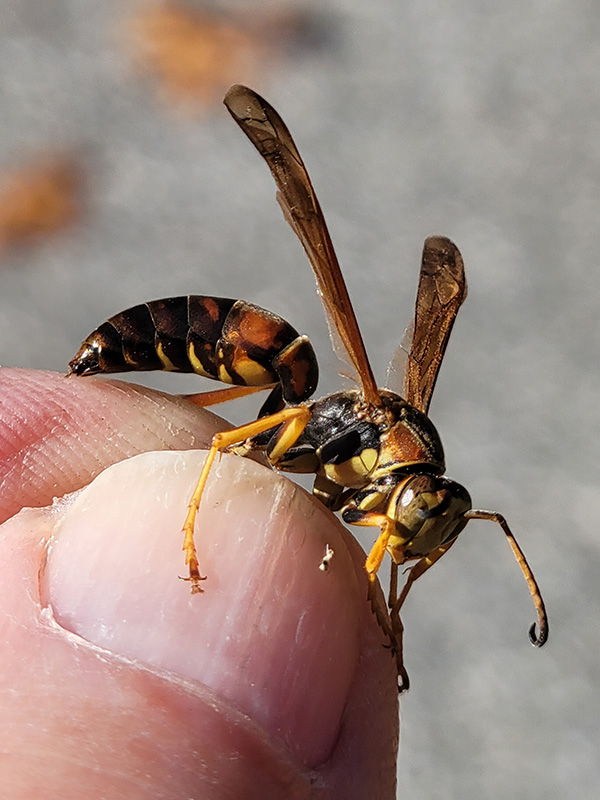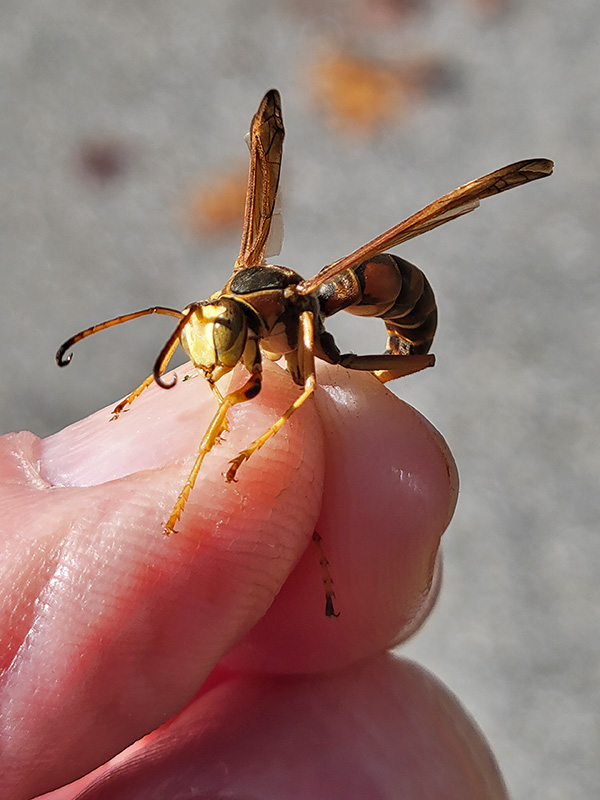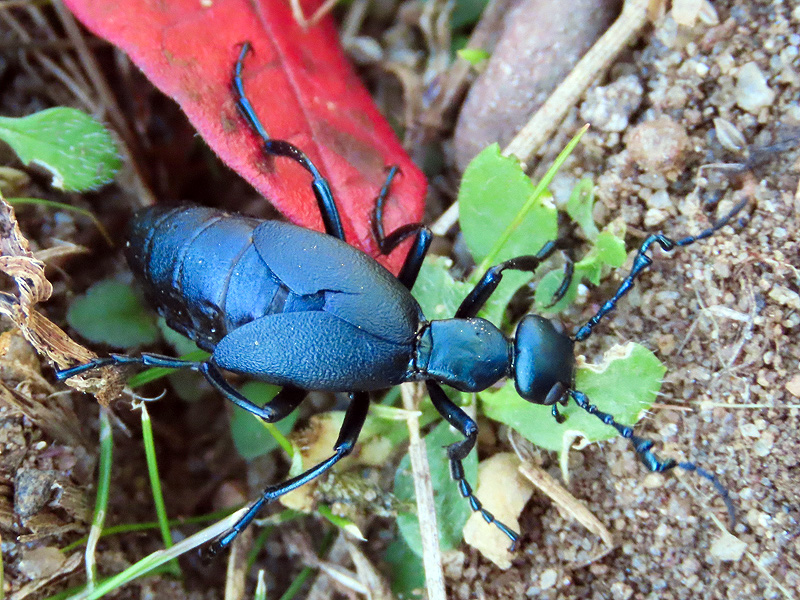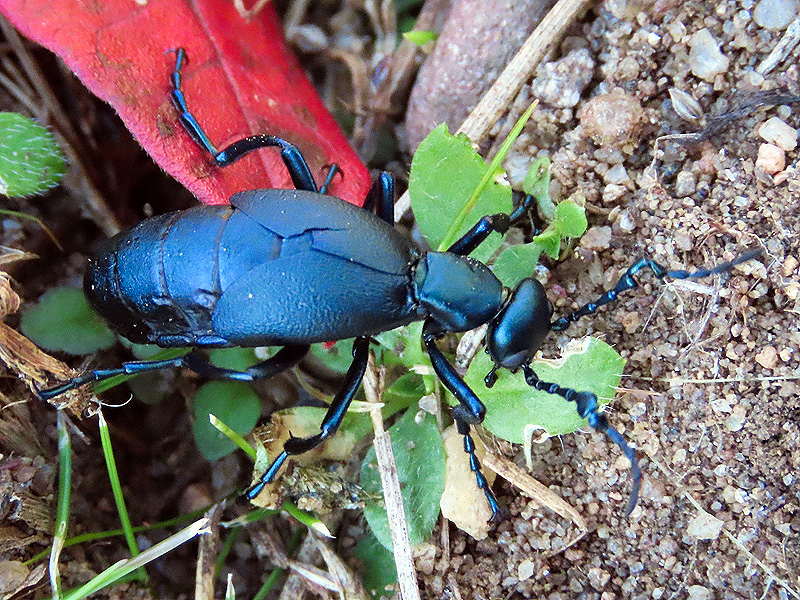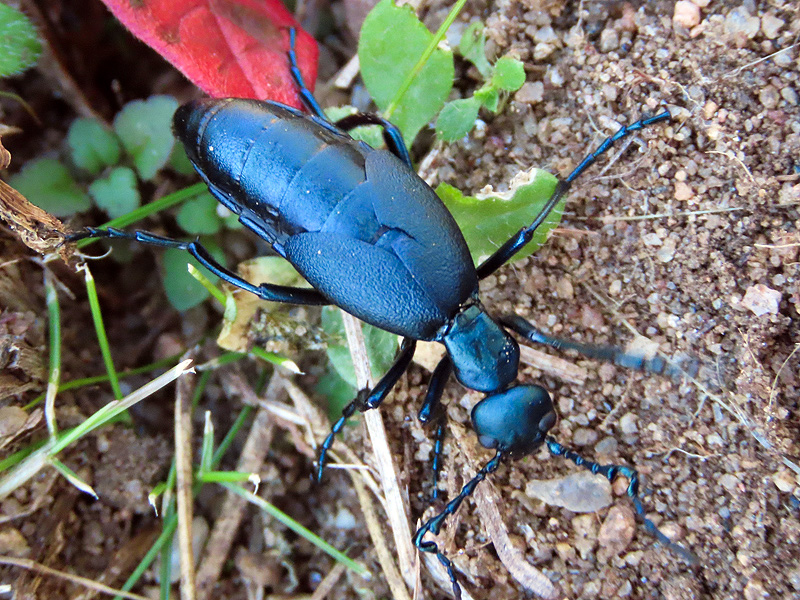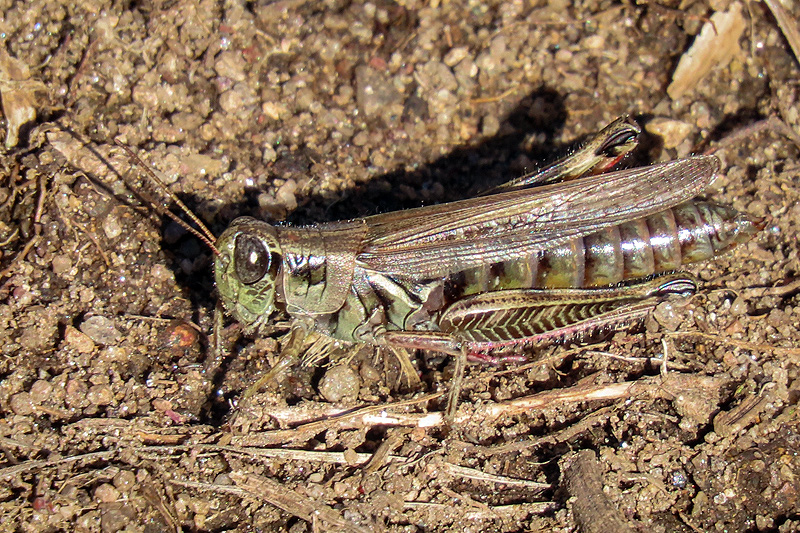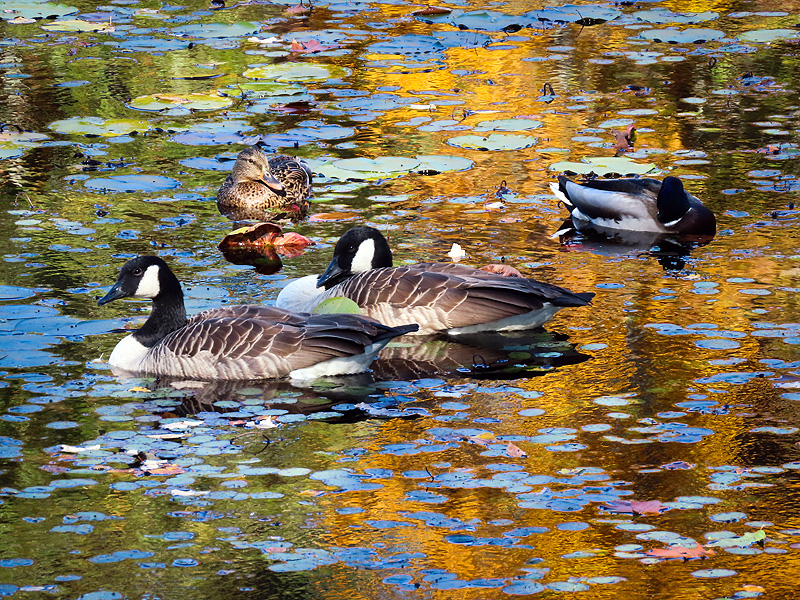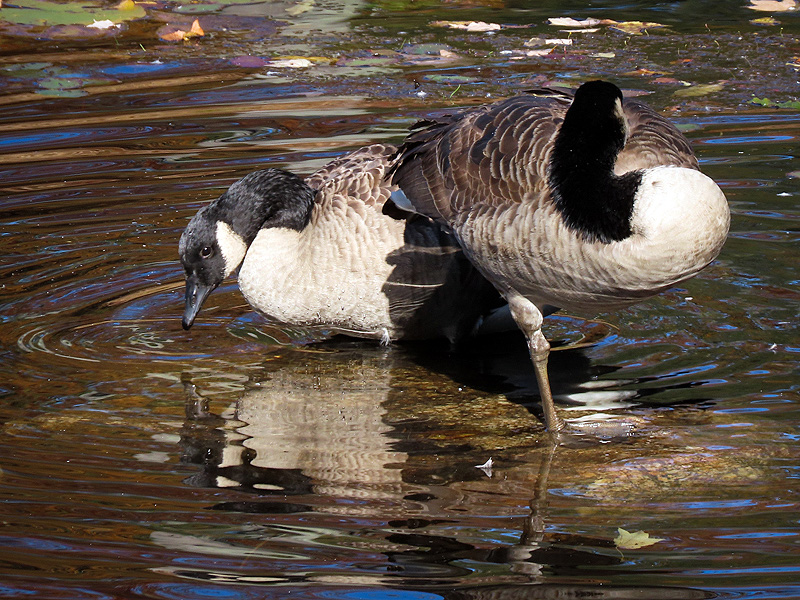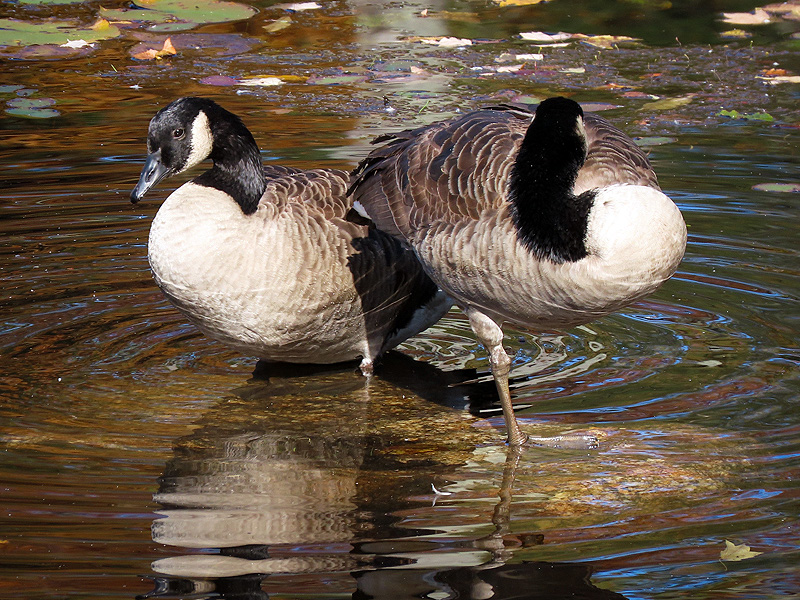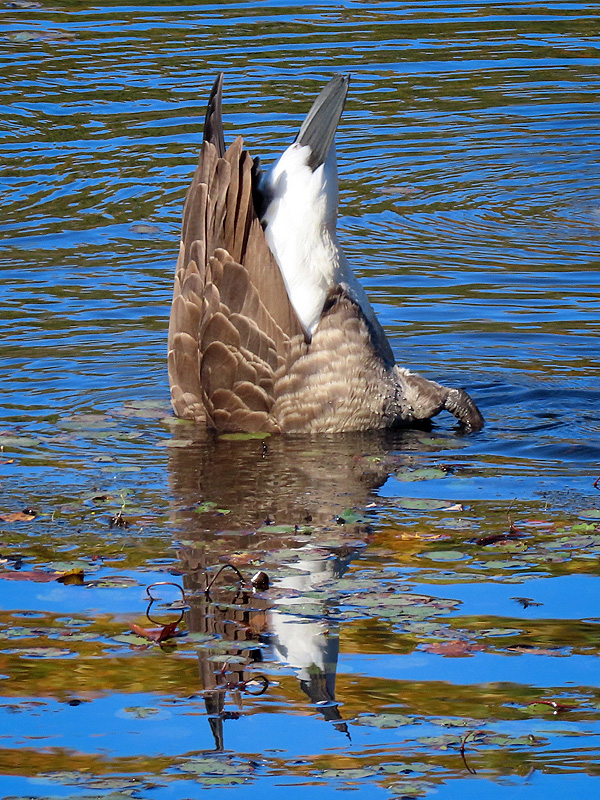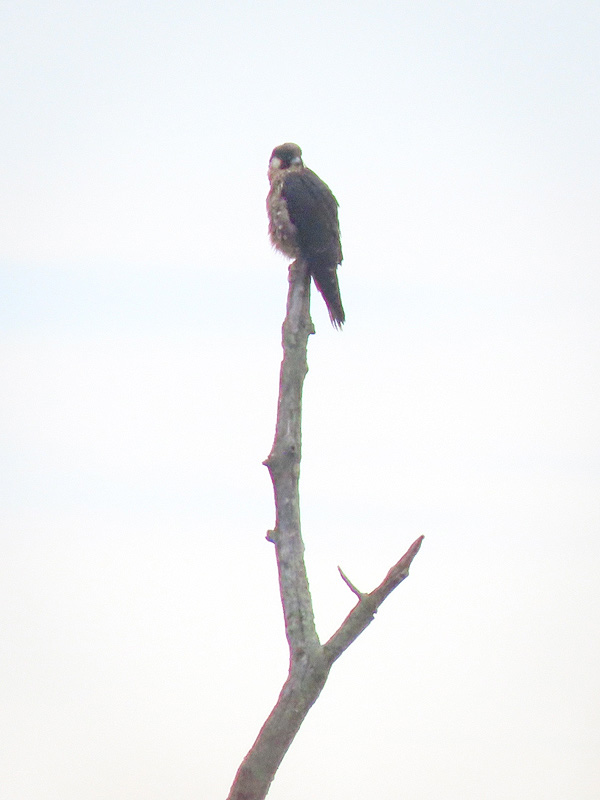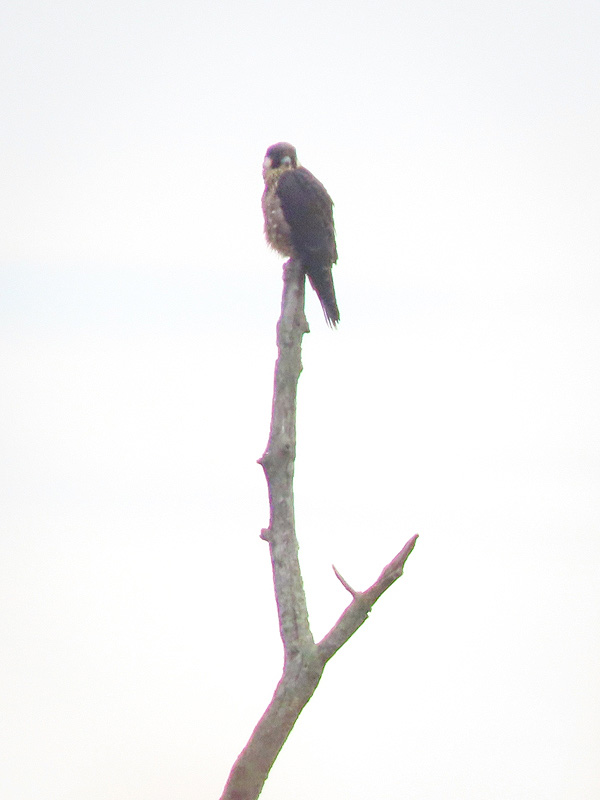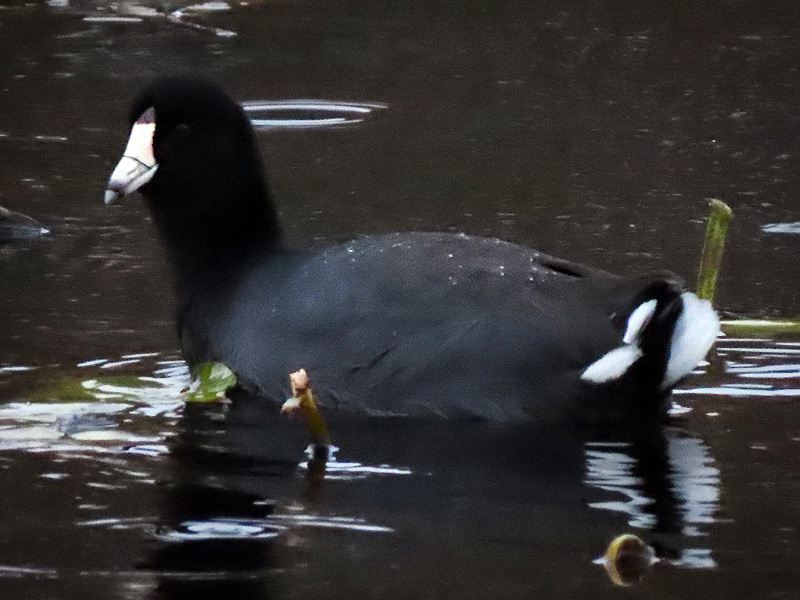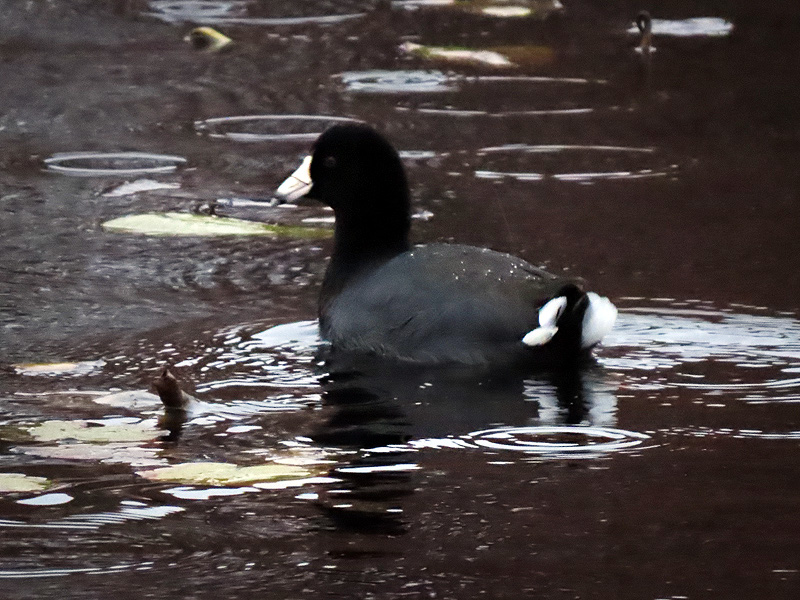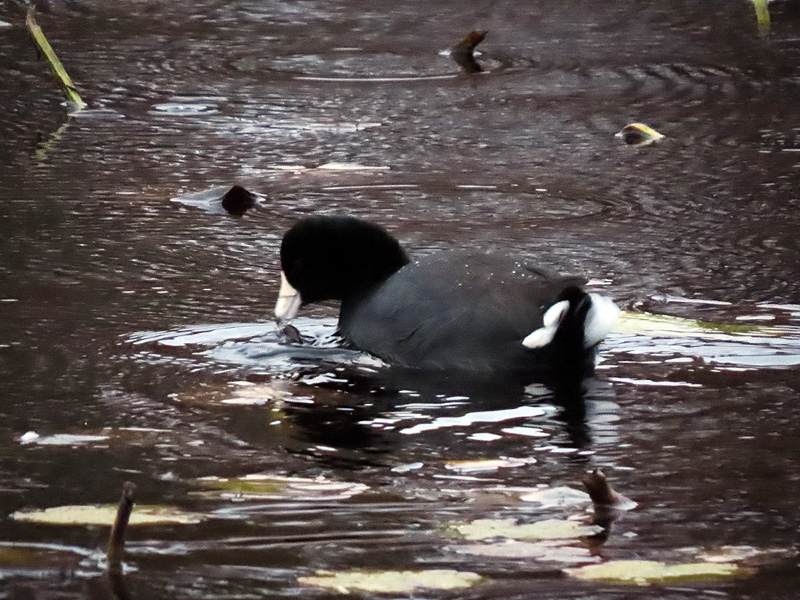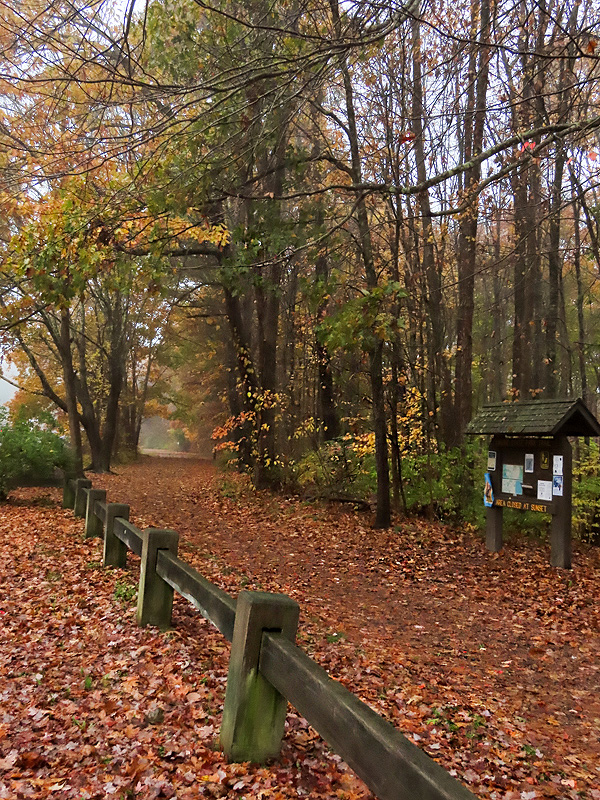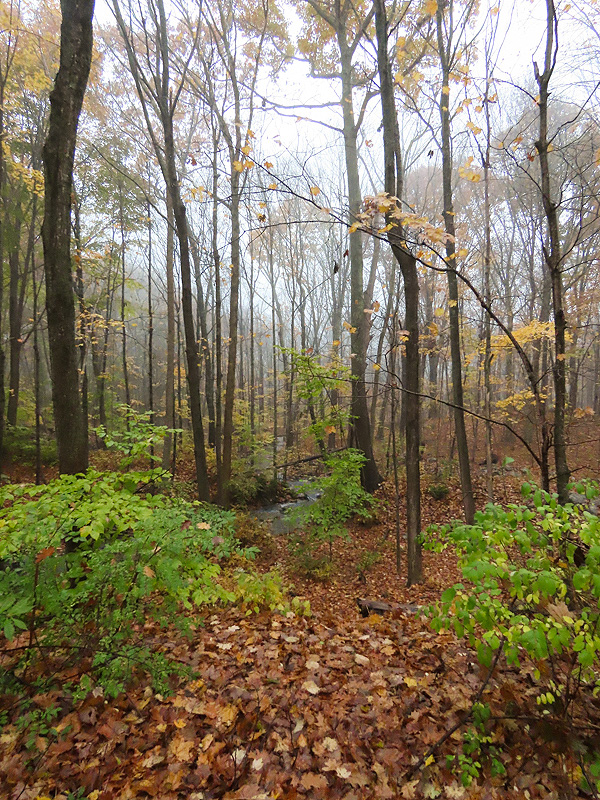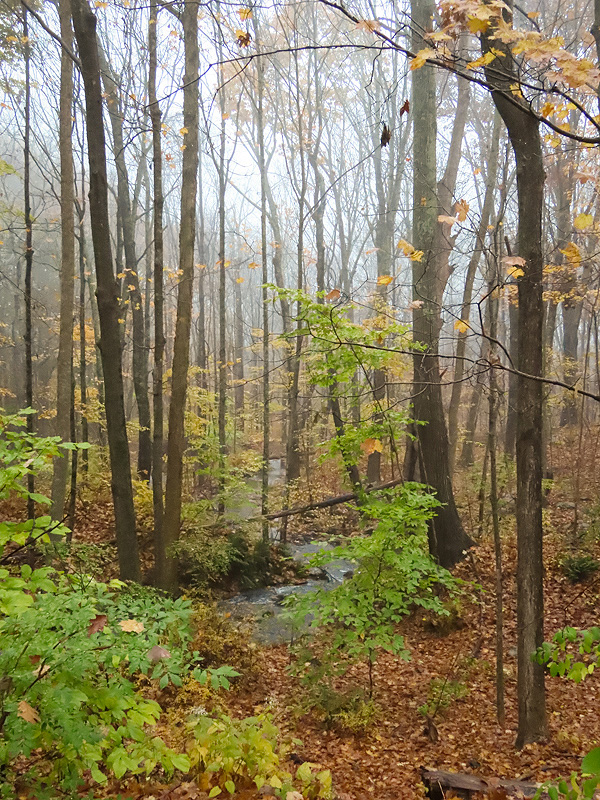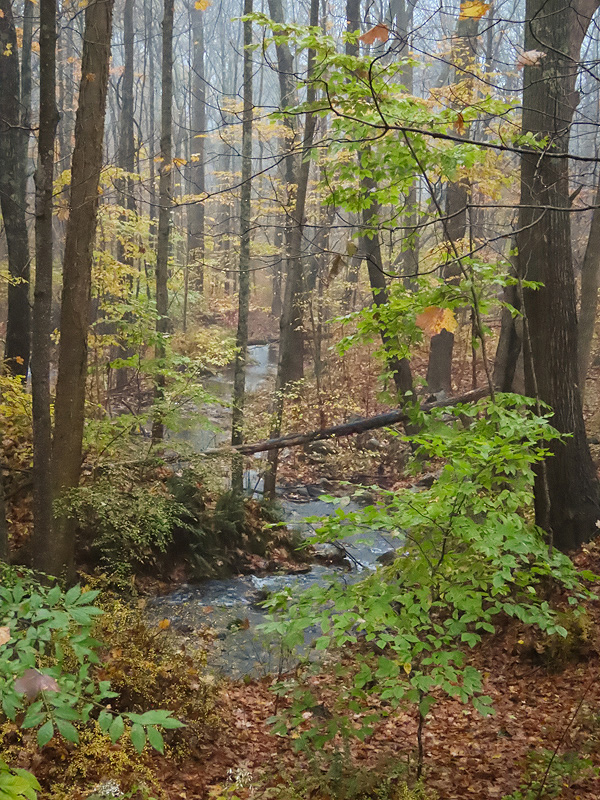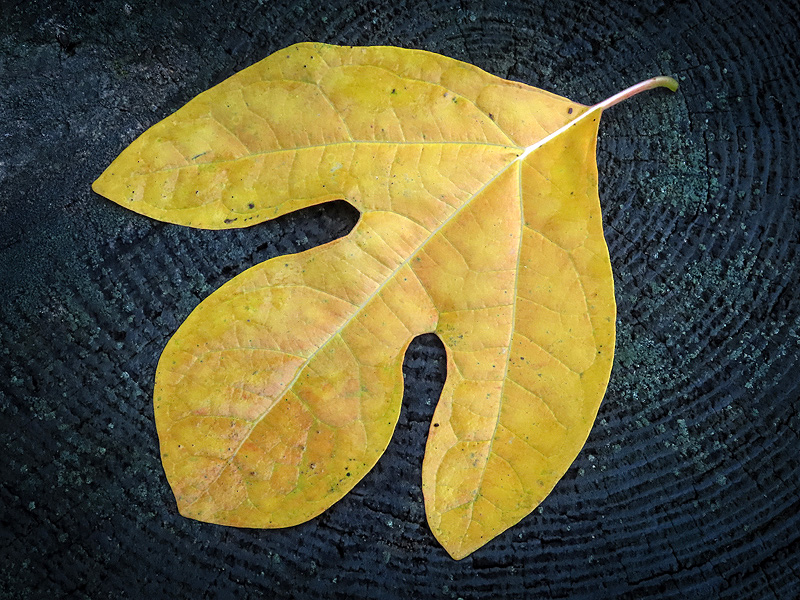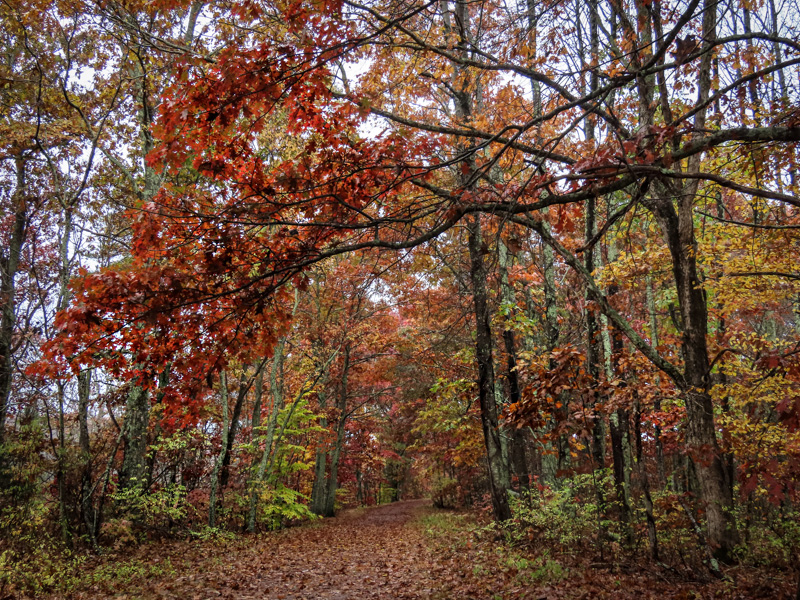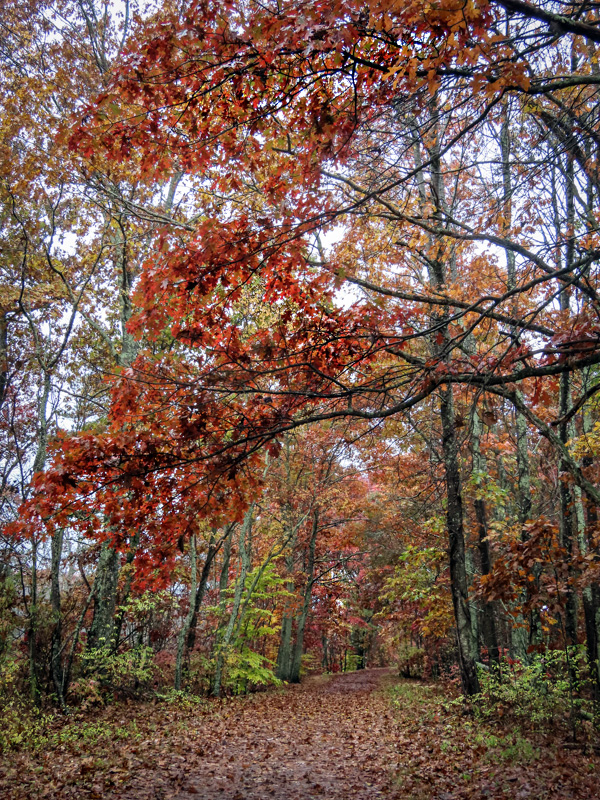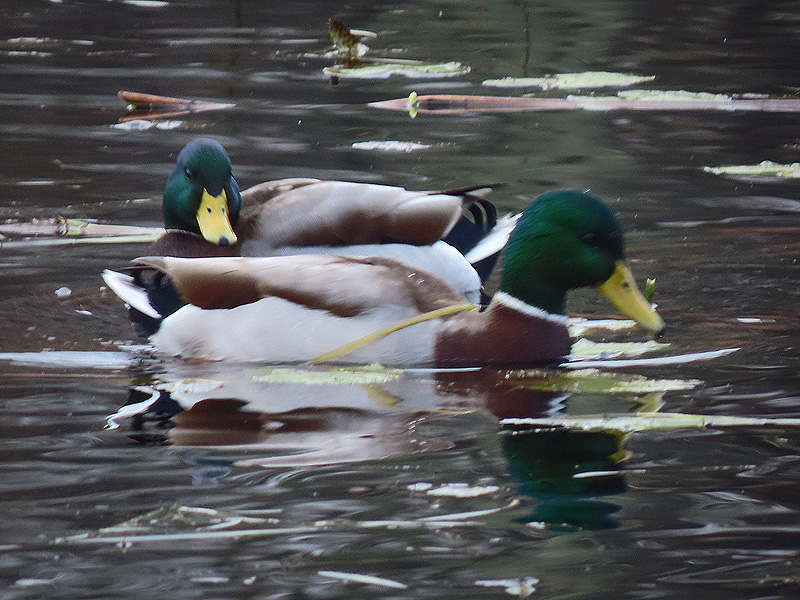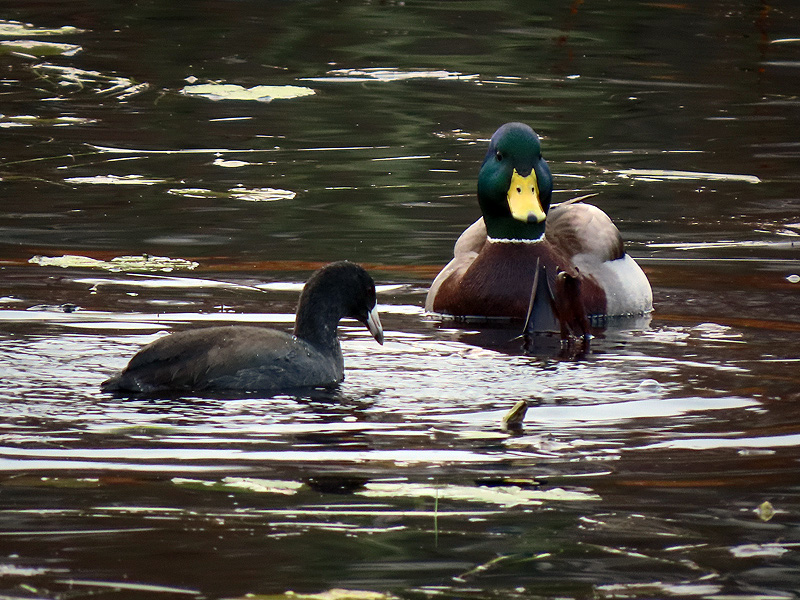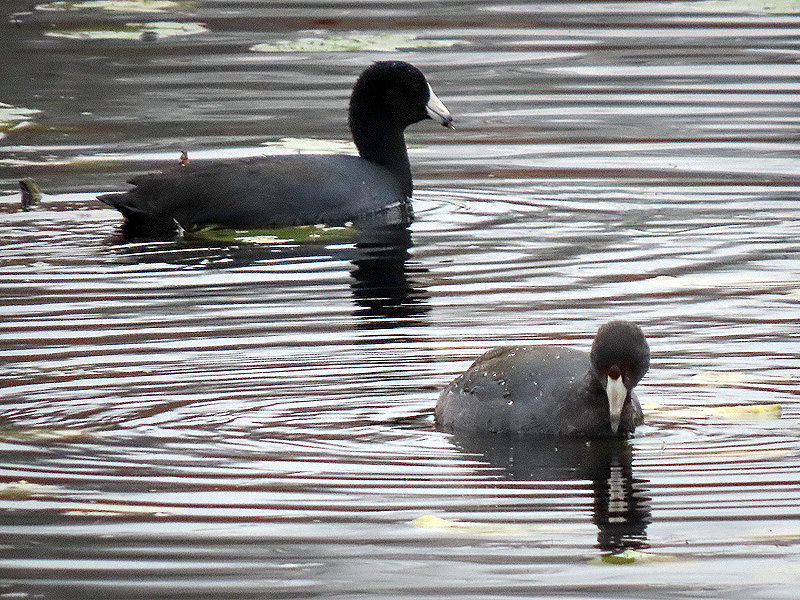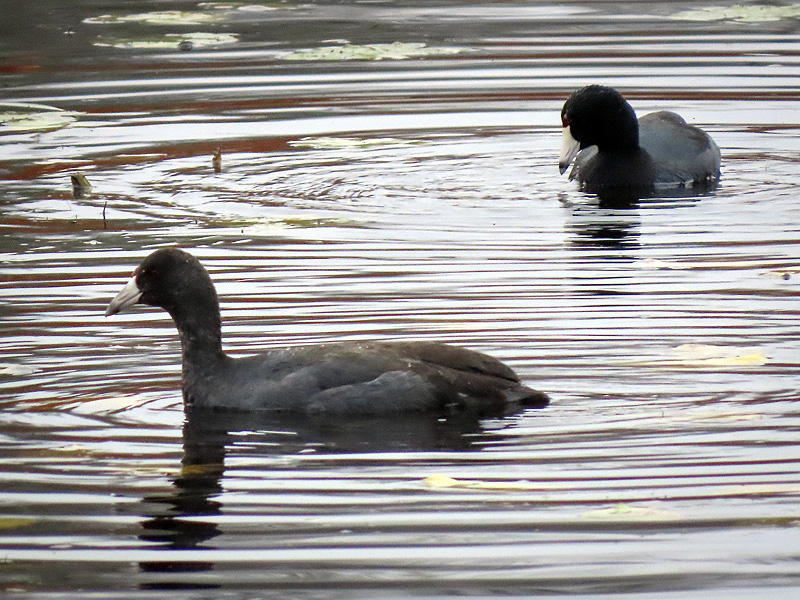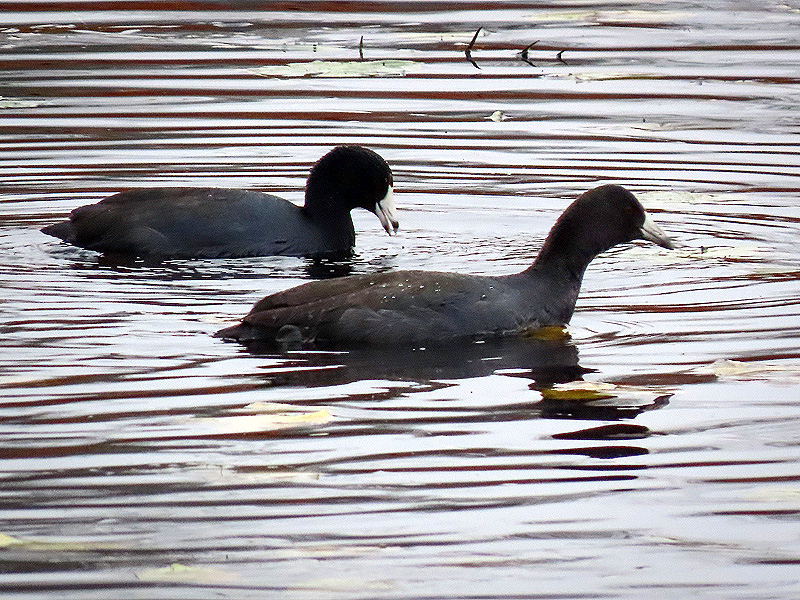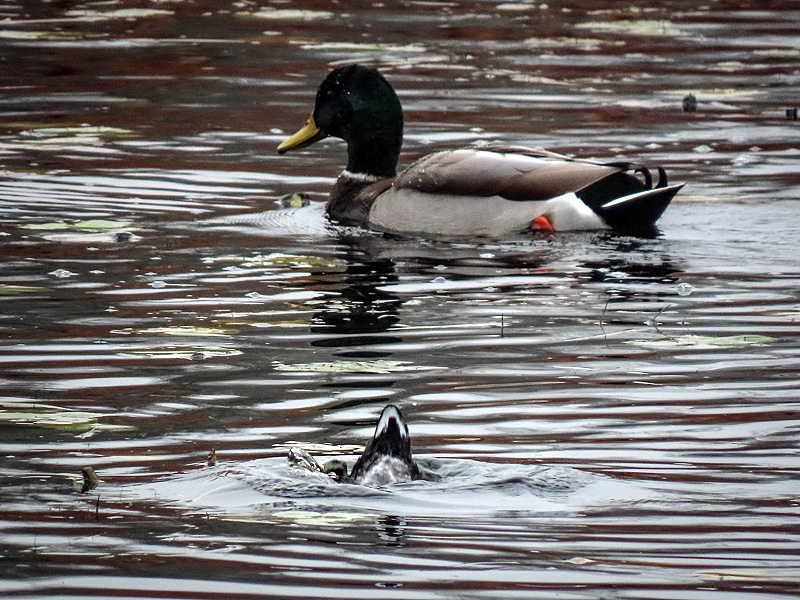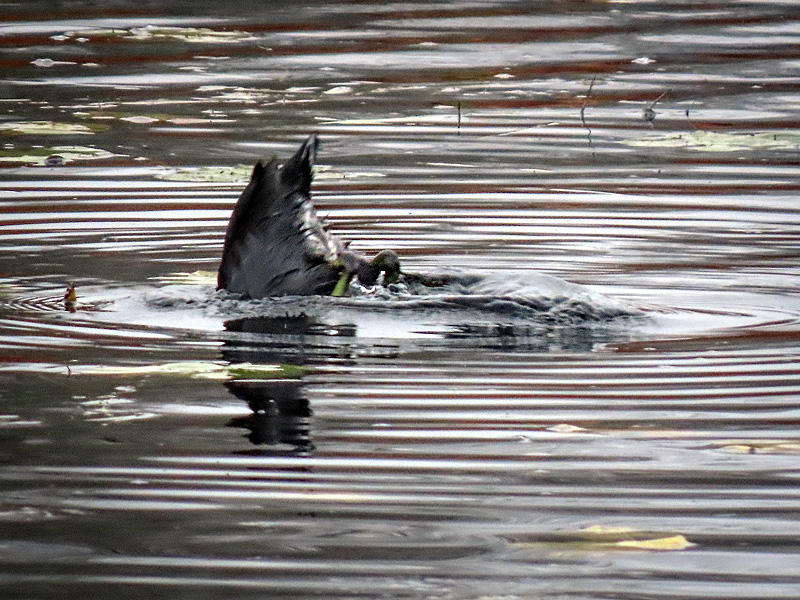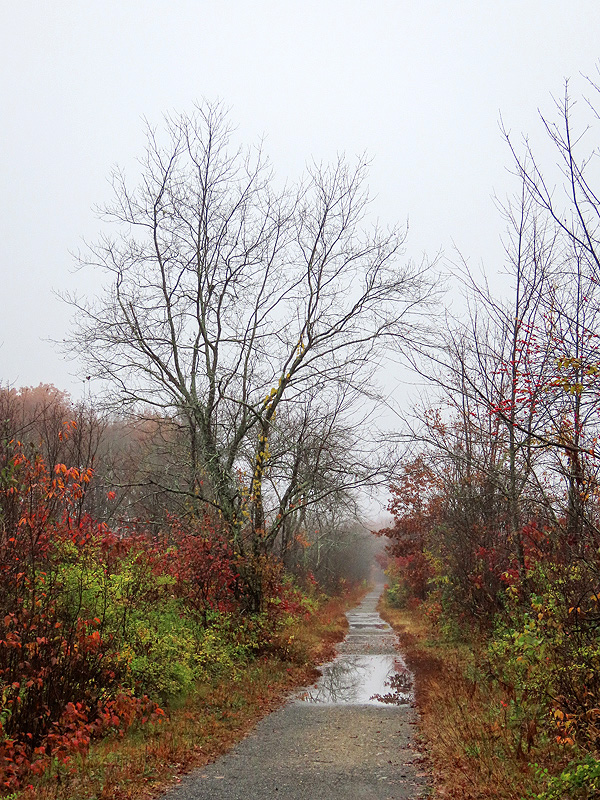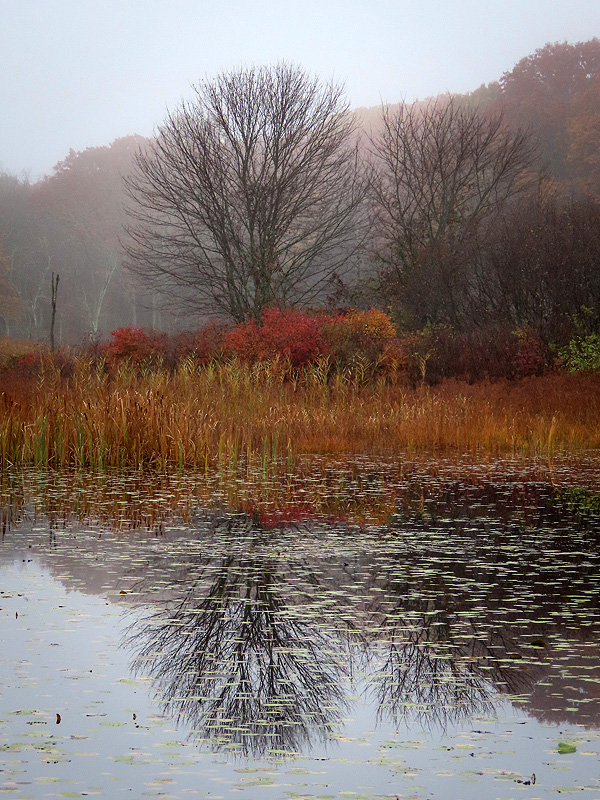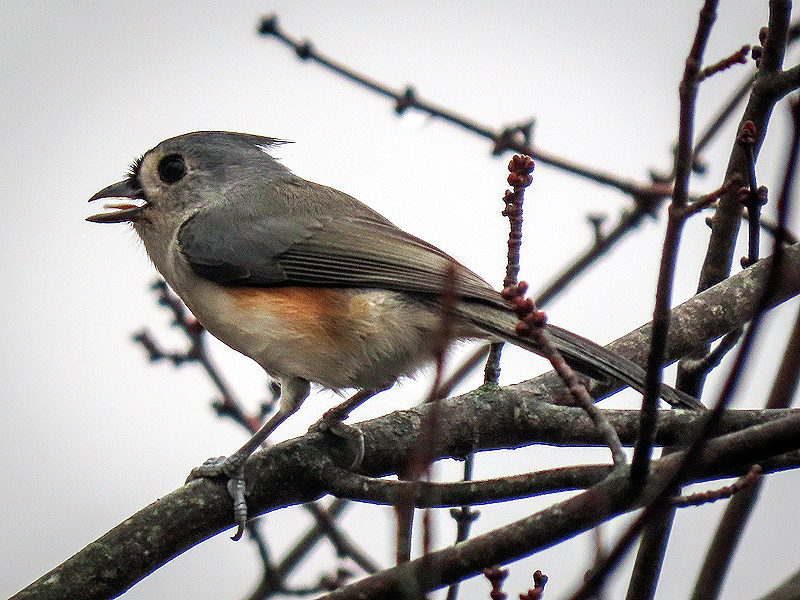Along the Air Line... 2022 - Fall, Part 5 The Air Line Trail in Eastern Connecticut - Stan Malcolm Photos |
HOME: Air Line... 2022 Pages Menu Stan's FlickR Albums |
October 22nd. |
|
In Spring, foliage emerges first at ground level and tree leaves come later. Fall reverses the sequence. |
|
|
|
Early sun on a Female Mallard (Anas platyrhynchos). |
|
|
Blue Jay (Cyanocitta cristata). |
Immature Yellow-bellied Sapsucker (Syphyrapicus varius). |
Male Downy Woodpecker (Picoides pubescens). |
One of the usual flock of American Robins (Turdus migratorius)... |
...and another one. |
Frost on Tall Meadow-rue (Thalictrum polygamum). |
|
|
|
|
|
|
(This and the following photo were taken "off trail".) |
Males have a yellow face and curled antennal tips... and lack the females' stinger, the modified ovipositor. Males go through the motions of stinging but lack the equipment. |
Two short afternoon walks. At the trail leading from River Road to the Blackledge River Bridge that carries the Air Line Trail, a male Blister or Oil Beetle (Genus Meloe; probably M. angusticollis or M. impressus). Fascinating life cycle and behaviors: "First-instar larvae - triungulins - climb to the top of a plant as a group, clump together in the shape of a female solitary ground bee, and exude a scent imitating the female bee pheromone. When a male bee comes and tries to mate with the clump of larvae, some of these clamp onto his hairs and eventually get to female bees when he mates for real. Impregnated female bees fly off and build nests in burrows; triungulins move to the new nests and feed on honey and pollen stocked by the bee for her own young." --Jim McClarin |
Both sexes have short overlapping elytra and no flight wings. When disturbed or attacked, they "reflexively bleed", releasing an oily yellow fluid from the membranes between leg or body segments. The liquid causes blisters. |
Note the odd C-shaped segments about halfway out on the antennae. They latch on the the female's antennae during courtship. |
Red-legged Grasshopper (Melanoplus femurrubrum). |
Canada Geese (Branta canadensis) and Mallards (Anas platyrhynchos) at the beaver pond on Day Meadow Brook at the River Road trail crossing. |
|
|
Bottom's up. |
October 23rd. Immature Peregrine Falcon (Falco peregrinus)? |
Too far away, too little light. |
October 24th. The two American Coots (Fulica americana) are still around. In poorer, earlier pictures I thought one or both might be immature but today's closer photos show clearly adult coloration. |
Coots are not closely related to ducks. Read about them here: https://www.allaboutbirds.org/guide/American_Coot |
|
October 25th. Another foggy damp morning, but at an unseasonably warm and welcome 59 degrees. |
Peering at the stream that passes under the trail near the Route 85 parking area. |
|
|
Sassafras leaf (Sassifras albidum). |
October 26th. A later start than usual; waiting for rain to end. |
|
The usual male Mallards (Anas platyrhynchos) about... |
...along with the two American Coots (Fulica americana). This photo shows how relatively small the coots are. |
|
|
|
First time I've seen the coots dive, not just dabble at the surface. |
They only stay under a few seconds. |
More rain overnight than I realized. Lots of puddles on the trail. |
|
|
Tufted Titmouse (Baeolophus bicolor). |
